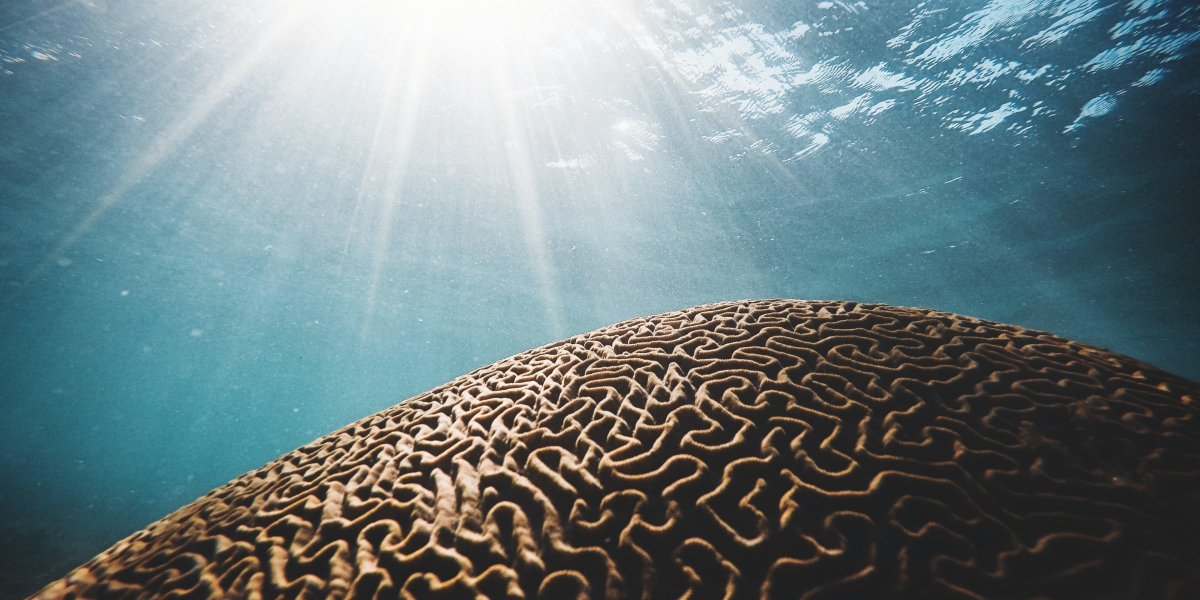
Effekter av meditasjon på hjernen ved smerter
Helt siden mindfulness ble et kjent begrep innen medisinsk forskning rundt 1985, har studier av meditasjon og smerte stått sentralt innen det som idag kalles kontemplativ hjernevitenskap.
Her er en tabell som gir en oppdatert oversikt over de effektene som meditasjon har på hjerrnen ved smerte.
Utgangspunktet er en tabell fra studien Neuromodulatory treatments for chronic pain: efficacy and mechanisms publisert i Nature i 2014, men antall studier har vokst på seg en del siden den gang. Derfor har jeg utvidet tabellen noe. De viktigste oppdateringene er en større innsikt i hvordan hvilenettverket (default mode network) fungerer, samt erkjennelsen av at endring i smerteoppfattelse foregår via flere unike hjernemekanismer selv etter kun én ukes trening for uerfarne meditatører.
Jeg har også lagt til to kolonner. I den ene forsøker jeg å forenkle det tekniske medisinske språket så det blir lettere å lese. Det kan føre til at betydningen blir mindre presis, så derfor er den mer tekniske kolonnen også nyttig. Helt til høyre er det også en kolonne som beskriver effekten gjennom begreper vi bruker i meditasjonsundervisning. Du kan lese mer om disse termene her.
I tillegg til disse hjernefunksjonene har meditasjon en rekke andre effekter på kroppen som innvirker på kronisk smerte, som reduksjon av betennelser og regulering av stresshormoner, søvn, blodtrykk og hjerterytme. En spesielt interessant studie i vår tids opioid-krise viser at den smertereduserende effekten av meditasjon ikke kommer fra kroppens egne opiater. Vi skal se mer på disse andre effektene i en senere bloggpost.
Vil du lære mer har jeg skrevet tidligere en grunnleggende beskrivelse av hvordan meditasjon hjelper ved kroniske smerter, og en introduksjon til meditasjon som smertelindring.
Takk til Børge Holen for hjelp til faglig språkvask!
Kilder
Jensen, M. P. et al. Neuromodulatory treatments for chronic pain: efficacy and mechanisms Nat. Rev. Neurol. 10, 167–178 (2014); published online 18 February 2014; doi:10.1038/nrneurol.2014.12
Fjorback, L. O., Arendt, M., Ornbøl, E., Fink, P. & Walach, H. Mindfulness‑based stress reduction and mindfulness‑based cognitive therapy: a systematic review of randomized controlled trials. Acta Psychiatr. Scand. 124, 102–119 (2011).
Grossman, P., Niemann, L., Schmidt, S. & Walach, H. Mindfulness‑based stress reduction and health benefits. A meta‑analysis. J. Psychosom. Res. 57, 35–43 (2004).
Keng, S. L., Smoski, M. J. & Robins, C. J. Effects of mindfulness on psychological health: a review of empirical studies. Clin. Psychol. Rev. 31, 1041–1056 (2011).
Teixeira, E. The effect of mindfulness meditation on painful diabetic peripheral neuropathy in
adults older than 50 years. Holist. Nurs. Pract. 24, 277–283 (2010).
Zeidan, F., Grant, J. A., Brown, C. A., McHaffie, J. G. & Coghill, R. C. Mindfulness meditation‑related pain relief: evidence for
unique brain mechanisms in the regulation of pain. Neurosci. Lett. 520, 165–173 (2012).
Zeidan, F. et al. Brain mechanisms supporting the modulation of pain by mindfulness meditation. J. Neurosci. 31, 5540–5548 (2011).
Davidson, R. J. & Goleman, D. J. The role of attention in meditation and hypnosis: a psychobiological perspective on transformations of consciousness. Int. J. Clin. Exp. Hypn. 25, 291–308 (1977).
Carmody, J. & Baer, R. A. Relationships between mindfulness practice and levels of mindfulness, medical and psychological symptoms and well‑ being in a mindfulness‑based stress reduction program. J. Behav. Med. 31, 23–33 (2008).
Garland, E. L. et al. Therapeutic mechanisms of a mindfulness‑based treatment for IBS: effects on visceral sensitivity, catastrophizing, and affective processing of pain sensations. J. Behav. Med. 35, 591–602 (2012).
Brown, C. A. & Jones, A. K. Meditation experience predicts less negative appraisal of≈pain: electrophysiological evidence for the involvement of anticipatory neural responses. Pain 150, 428–438 (2010).
Grant, J. A., Courtemanche, J. & Rainville, P. A non‑elaborative mental stance and decoupling of executive and pain‑related cortices predicts low pain sensitivity in Zen meditators. Pain 152, 150–156 (2011).
Holzel, B. K. et al. Mindfulness practice leads to increases in regional brain gray matter density. Psychiatry Res. 191, 36–43 (2011).
Fell, J., Axmacher, N. & Haupt, S. From alpha to gamma: electrophysiological correlates of meditation‑related states of consciousness. Med. Hypotheses 75, 218–224 (2010).
Ives‑Deliperi, V. L., Solms, M. & Meintjes, E. M. The neural substrates of mindfulness: an fMRI investigation. Soc. Neurosci. 6, 231–242 (2011).
Craig, A. D. How do you feel—now? The anterior insula and human awareness. Nat. Rev. Neurosci. 10, 59–70 (2009).
Critchley, H. D., Wiens, S., Rotshtein, P., Ohman, A. & Dolan, R. J. Neural systems supporting interoceptive awareness. Nat. Neurosci. 7, 189–195 (2004).
Lutz, A., McFarlin, D. R., Perlman, D. M., Salomons, T. V. & Davidson, R. J. Altered anterior insula activation during anticipation and experience of painful stimuli in expert meditators. Neuroimage 64, 538–546 (2013).
Grant, J. A., Courtemanche, J., Duerden, E. G., Duncan, G. H. & Rainville, P. Cortical thickness and pain sensitivity in zen meditators. Emotion 10, 43–53 (2010).
Rainville, P., Carrier, B., Hofbauer, R. K., Bushnell, M. C. & Duncan, G. H. Dissociation of sensory and affective dimensions of pain using
hypnotic modulation. Pain 82, 159–171 (1999).
May, A. Chronic pain may change the structure of the brain. Pain 137, 7–15 (2008).
Cahn, B. R. & Polich, J. Meditation states and traits: EEG, ERP, and neuroimaging studies. Psychol. Bull. 132, 180–211 (2006).
Aftanas, L. I. & Golocheikine, S. A. Human anterior and frontal midline theta and lower alpha reflect emotionally positive state and internalized attention: high‑resolution EEG investigation of meditation. Neurosci. Lett. 310, 57–60 (2001)
Zeidan F, Emerson NM, Farris SR, Ray JN, Jung Y, McHaffie JG and Coghill RC: Mindfulness meditation-based pain relief employs different neural mechanisms than placebo and sham mindfulness meditation-induced analgesia. The Journal of Neuroscience, 35:15307–15325, 2015.
Zeidan F and Vago D: Mindfulness meditation–based pain relief: a mechanistic account. Ann N Y Acad Sci. 1373: 114–127, 2016.
Zeidan F, Salomons T, Farris SR, Emerson NM, Adler- Neal, A , Jung Y, Coghill RC. Neural Mechanisms Supporting the Relationship between Dispositional Mindfulness and Pain. PAIN, 2018; 1 DOI: 10.1097/j.pain.0000000000001344
Photo by Daniel Öberg on Unsplash